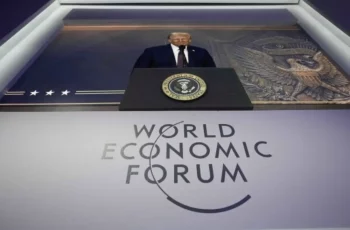
What’s most important is that Putin and Trump trust one another, their representatives have excellent working relations with each other, and these two leaders are aware of the challenges posed by Ukraine and Europe.
Russia and the US confirmed their mutual intent on Tuesday to revive the grain deal, though Russia’s statement conditioned this on the US finally complying with the original deal’s provisions, namely the removal of sanctions and other obstacles to the export of Russia’s agricultural goods and fertilizer. Ukraine agreed in separate talks with the US, also in Saudi Arabia, to revive the deal as well. Both Russia and Ukraine also confirmed their willingness to adhere to the 30-day energy infrastructure ceasefire.
These two arrangements that have been agreed to thus far, the aforementioned energy ceasefire and the complementary one in the Black Sea, build upon last year’s respective efforts by Qatar and Turkiye that were analyzed at the time in the two preceding hyperlinks. They fell flat due to Ukraine changing its mind at the last minute on the brink of another grain deal last spring, using last summer’s energy ceasefire talks to dupe Russia ahead of invading Kursk, and the US’ lack of interest in pressuring Ukraine.
While Ukraine remains capricious and deceitful, its expulsion from most of Kursk as well as Trump’s willingness to pressure Zelensky as proven by his temporary suspension of military and intelligence aid to Ukraine changed the strategic dynamics, thus allowing for these breakthroughs. As could have been predicted, Ukraine has repeatedly violated the energy infrastructure ceasefire and will likely violate the revived Black Sea one too, but the trust between Putin and Trump will likely keep everything on track.
Both leaders understand the stakes – avoiding nuclear war is their shared goal, while the US also wants to accelerate its “Pivot (back) to Asia” for more muscularly containing China whereas Russia also wants to refocus on its domestic socio-economic development – hence some observers’ cautious optimism. Everything can still go wrong though if Ukraine keeps violating the partial ceasefire(s) until Russia finally responds or Russia’s possible expansion of its ground campaign provokes Trump into abandoning talks.
In either case, Putin would probably inform Trump of his plans in advance due to the trust between them or task his subordinates with conveying this to their counterparts, so it’s possible that neither results in the full-scale resumption of the NATO-Russian proxy war in Ukraine. The challenges right now are therefore threefold and entirely the US’ responsibility to overcome: 1) stop the “deep state” from sabotaging Trump’s plans; 2) pressure Ukraine to agree to peace; and 3) stop European meddling.
Correspondingly: 1) the “deep state” could impede Russia’s requested lifting of US sanctions; 2) Ukraine could launch another doomed-to-fail invasion of Russia and/or dangerously target nuclear power plants once again; and 3) European, especially British, support could embolden Ukraine to do the aforesaid. At any rate, tangible progress has already been achieved with regard to getting Ukraine to formally agree to the partial energy infrastructure and Black Sea ceasefires (“grain deal”), which is impressive.
Before the final step of brokering a full ceasefire, which could then result in rewards for compliance like much more US investment into Ukraine and phased sanctions relief for Russia, the existing partial ones must be enforced in the face of Kiev already repeatedly violating the energy infrastructure ceasefire. The prerequisite is to assemble a truly neutral observation mission, which could be comprised of non-Western countries, and only then can an enforcement mechanism be agreed upon by all relevant parties.
There’s still some way to go before that happens so nobody should get their hopes up about speedy progress being made, particularly due to the complicated technicalities involved in these interconnected steps, but it’s also possible that more progress has been made behind the scenes than is publicly known. In parallel, the US must also overcome the three previously mentioned challenges of its own “deep state”, Ukrainian compliance, and European meddling, all three of which are easier said than done.
Anyhow, provided that no misunderstandings emerge between Putin and Trump, everything should keep moving towards a full ceasefire even if it takes longer than the US’ reported 20 April goal. What’s most important is that Putin and Trump trust one another, their representatives have excellent working relations with each other, and these two leaders are aware of the challenges posed by Ukraine and Europe. This suggests that a full ceasefire is inevitable, it’s just a question of when and on what terms.
Source: author’s blog










Comments